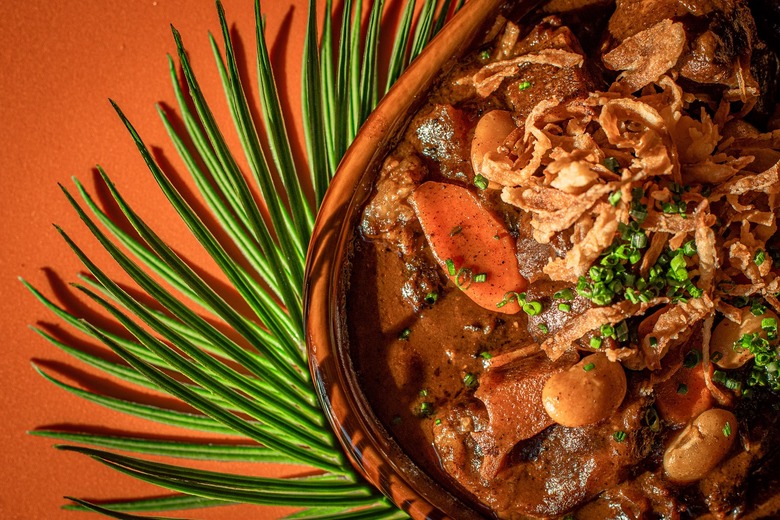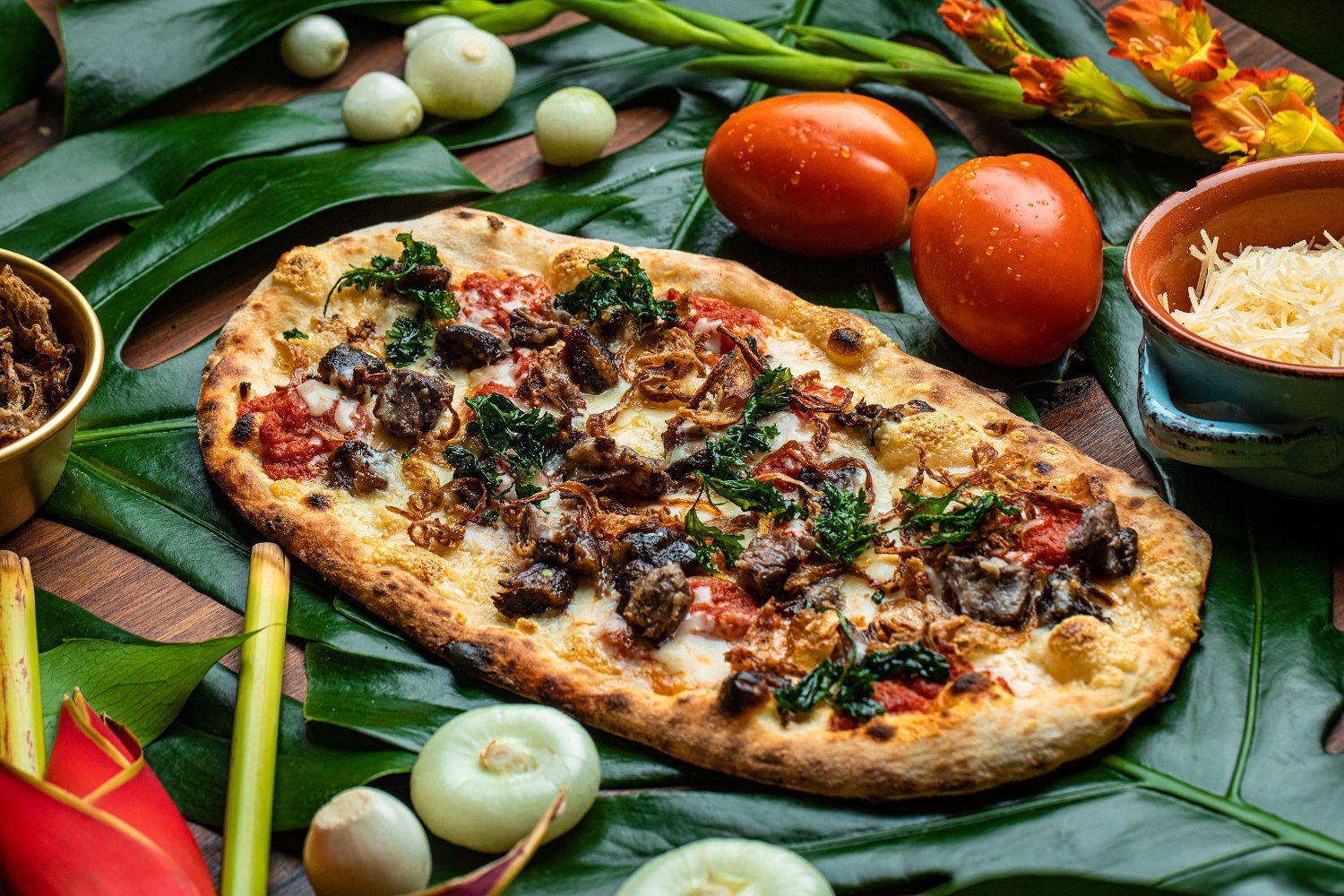At Brooklyn's KOKOMO, The Diversity And Harmony Of Caribbean Food Are On Full Display
This story is part of an ongoing series in honor of Black History Month on the diversity, roots and evolution of Black cooking and cuisine in America.
When you think of Caribbean food, what do you think of? Jerk chicken? Beef patties? Plantains, perhaps? If that's the case, you're not wrong. But the culture — and the food — of the dozens of countries and thousands of islands within the Caribbean Sea is remarkably diverse and encompasses so much more than that.
Caribbean food is a reflection of its Indigineous, African and colonial roots. Beginning in the 15th century, islands of the Caribbean were colonized by the Spanish, Dutch, French and English, who in turn brought enslaved people from West Africa to work the sugar cane plantations. Immigrants from across Asia, particularly China and India, and the Middle East also began to occupy the region. The culinary traditions from these cultures mingled across the islands and resulted in a multitude of regional cuisines.
That melange and continued evolution of Caribbean cuisine is showcased by married couple Ria and Kevol Graham of Williamsburg's KOKOMO.
"A lot of people don't know just how diverse the Caribbean can be. There are a lot of cultures that kind of became a melting pot similar to New York," says Ria, who is Trinidadian. "Where it's really expressed is through the food. We try to reflect that in the restaurant by making it as diverse as we can in comparison to the actual Caribbean. We wanted to reflect that and educate people that it isn't just an Afro culture going on there, there are many cultures that are embodied in everything that we do as West Indians."
One example of the diverse origins of what is now regional cuisine is the Jamaican dish saltfish and ackee. In fact, saltfish and ackee is the national dish of Jamaica, but neither of the main components of this dish are native to the island.
Ackee is a tropical fruit that was brought to the West Indies from West Africa during the 18th century. It now grows across Jamaica, and once the fruit opens up, it's harvested, canned and sold across the island as well as exported.
Then there is saltfish. Also known as bacalao or salted cod, saltfish hails from Europe and was originally brought to the Carribean because it was heavily preserved and lasted well on long ship rides. Cod cannot be found in the warm waters of the Caribbean, so the ingredient must still be imported from the North Atlantic.
Today, these two ingredients from different parts of the world make up a signature dish of the country that is indicative of the history and flavors of the Caribbean — especially when they're cooked together with bell pepper, onion, tomato, and, of course, some signature heat courtesy of a Scotch bonnet pepper.
"Bacalao is very popular in the Latino-Caribbean culture, in Puerto Rico and the Dominican Republic. In Jamaica, one of our most popular dishes is bacalao, but we call it saltfish. So, that's how we tie those cultures together," says Kevol. Indeed, the national dish of St. Lucia is green fig and saltfish — made with green bananas, not figs — while Trinidadians enjoy saltfish bujol, a vibrant salad made with rehydrated saltfish.
Saltfish and ackee, as well as Caribbean food at large, is continuing its evolution on U.S. shores. At KOKOMO, the Grahams serve their ackee on a flatbread and bring in some of the Carribbean's Latin influences. "Instead of saltfish, we did grilled shrimp, which is served with a tomato confit and a Scotch bonnet cilantro sauce, which is bringing in the Hispanic heritage that we have throughout the Caribbean," says Ria. The flatbreads are also a nod to the restaurant's location in Williamsburg, Brooklyn, and the pizza culture in New York City.
Kokomo's Vegan Jamaican Curry Sauce Recipe
"We figured out a way to combine all different influences that come to the Caribbean and combine that with the flatbread, which came out amazing," says Ria. "For instance, oxtail is one of the most popular dishes in Jamaica, and we put that on flatbread with some fried onions and tomato confit. Another example is our rasta pasta flatbread. It's got penne pasta and alfredo, but it's mixed in with jerk seasoning, which gives it a very powerful taste."
In addition to flatbreads, KOKOMO frequently plays with Caribbean staples on its menu, from an all-American burger with a guava sauce to Canadian salmon with yuca mash.
The curry, of course, also has a similar twist. "We wouldn't feel like an authentic [Caribbean] restaurant without curry," says Kevol. But rather than going with a traditional curried goat, they instead swapped in lamb shank "as a nod to the Middle Eastern vibe that we have going throughout the Caribbean."
Whether it's oxtail on flatbreads, lamb curry or shrimp and ackee, Caribbean cooking both new and old is centered around one thing: love, which the Grahams emphasize is the core of their restaurant. "The story of KOKOMO is an expression of our love for each other and love for the Caribbean, our love for culinary arts and our love of bringing people together," Kevol says.
And like a good love story, Caribbean food done right takes time. Braising meat to make it fall-off-the-bone tender and simmering sauces until the spices punch you in the face with their fragrances are integral elements of the cuisine, which KOKOMO respects in the kitchen.
"We don't take shortcuts and try to elevate every dish here to make people feel like they're getting food they're familiar with but on another level or by pairing it with a different dish. That's how we stand out," Kevol says.
"I think the Caribbean culture has been safe," he reflects. "We want to change the narrative of how people view Caribbean food."


